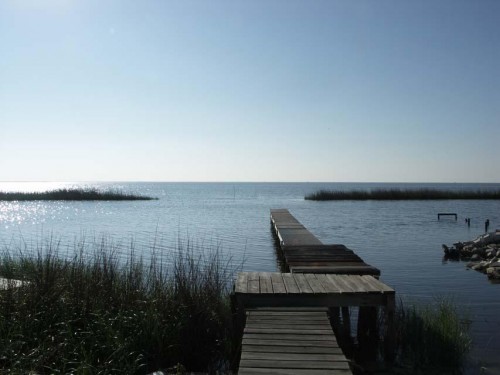
Proposed parish pipeline provides promise
May 3, 2011
Rebecca Cheramie
May 5, 2011The Greater Lafourche Port Commission began advertising for bids Monday for an infrastructure improvement that would make piloting to and from South Lafourche Leonard Miller Jr. Airport safer.
Airport manager Joe Wheeler said the construction of a taxiway parallel to the airport’s runway would boost the airport’s safety rating by reducing the amount of time an aircraft is on the runway.
“The parallel taxiway, that’s a huge safety deal,” Wheeler said. “Right now, aircrafts, when you taxiway up to the runway and you’re going to take off [into the north], aircrafts have to back-taxi on the runway and turn around and takeoff, which just raises the percentage of possible runway incursions that could happen, or an aircraft landing on top of another.”
The south Lafourche airport currently has a taxiway in place, but it is restricted to the north end of the runway and doesn’t extend halfway down the runway.
The current setup requires planes to land, launch and taxi on the airport’s lone 6,502-foot runway. It is an uncontrolled, or Class G, airspace, which means the onus is on pilots to communicate with each other to prevent any accidents.
“People who come in to land typically announce their position,” the airport manager said. “You talk to each other when you’re flying in a Class G airspace, because you don’t want to hit each other, but you’re not required to talk. Everybody does a real good job with it.”
Michael Hixson, project manager at the LPA Group in Baton Rouge, is the lead engineer on the parallel taxiway and has worked in airport development for 22 years. He said the primary goal of a taxiway is to “alleviate the possibility of an aircraft having to use a runway for taxiing purposes.”
However, both the airport manager and the taxiway engineer agreed that the infrastructure addition could facilitate future expansion. An improved safety rating would open the door for more Federal Aviation Administration grant funds, and tenants would be able to extend their apron into the airfield and have a direct connection with the taxiway.
Hixson said the construction cost is estimated at $3.7 million. The rise of oil costs means that asphalt is more expensive than it was originally known, but the LPA Group anticipated some escalation in costs and incorporated such in its plans, he said.
Wheeler estimated the total cost of the project to be $6.5 million.
The taxiway may not be completed in full through one project, and its size will be determined by the amount the airport receives through a FAA grant. Wheeler said the Greater Lafourche Port Commission would match the grant.
“The port commission is willing and ready for the local match,” Wheeler said. “They want this airport to expand, and that’s just how it has been from what I’ve been able to read from the past, they want to expand and move forward with it, the same way it is with Port Fourchon.”
The south Lafourche airport has about 300 acres for airport development and 1,200 acres for industrial development, Wheeler said. He added that the airport is averaging about 650 operations per month, which has increased as the Bureau of Ocean Energy Management, Regulation and Enforcement began signing deepwater drilling permits.
“I’ve seen a pickup in traffic since they started signing the offshore drilling permits,” said Wheeler, who has been with the airport since November. “A lot of people worried about the port, and that’s the bread-and-butter, there, that’s where the jobs are at, but even with our airport, I’ve been able to tell.”







